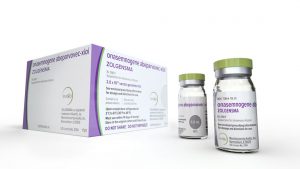The Novartis facility in North Carolina will begin shipping Zolgensma gene therapy doses immediately after receiving US FDA commercial licensure approval.
The Swiss Big Pharma firm announced yesterday the US Food and Drug Administration (FDA) has granted approval to its multi-product gene therapy manufacturing facility in Durham, North Carolina.
The 170,000 square-foot facility site will primarily be used to produce Zolgensma (onasemnogene abeparvovec. Novartis added Zolgensma to its pipeline through the $8.7 billion acquisition of AveXis in May 2018 and a year later, received FDA approval for the single-dose, one-time gene therapy against spinal muscular atrophy (SMA).

“The site expects to provide approximately 100 doses to US patients in the first six months after licensure,” a Novartis spokesperson told BioProcess Insider. “More than 1,800 patients have been treated with Zolgensma globally across clinical trials, managed access programs, and in the commercial setting.”
According to the firm, the facility will begin producing and shipping the gene therapy immediately.
Zolgensma’s two-site network
Licensure comes after Novartis pumped around $115 million into the site, originally through a $55 million investment on the tail of the AveXis buy and then with a further $60 million in February 2019. The Durham facility becomes the second commercial Zolgensma manufacturing plant in Novartis’ network, joining the Libertyville, Illinois plant, which is equipped with iCELLis bioreactor systems supplied by bioprocess vendor Pall Corporation.
However, initial Zolgensma manufacturing plans have been scaled back: a Longmont, Colorado facility acquired in April 2019 from AstraZeneca for the support of Zolgensma’s rollout was sold to contract manufacturer AGC Biologics in July 2021 after Novartis admitted to over anticipating the amount of capacity needed to support demand.
“The two-site network has sufficient capacity to supply the current global demand as well as any predicted growth going forward,” the spokesperson said.
“We are always looking for process improvements to increase yield, but there aren’t additional capacity plans at this time as the two-site network has sufficient capacity to supply the current global demand as well as any predicted growth going forward.”
